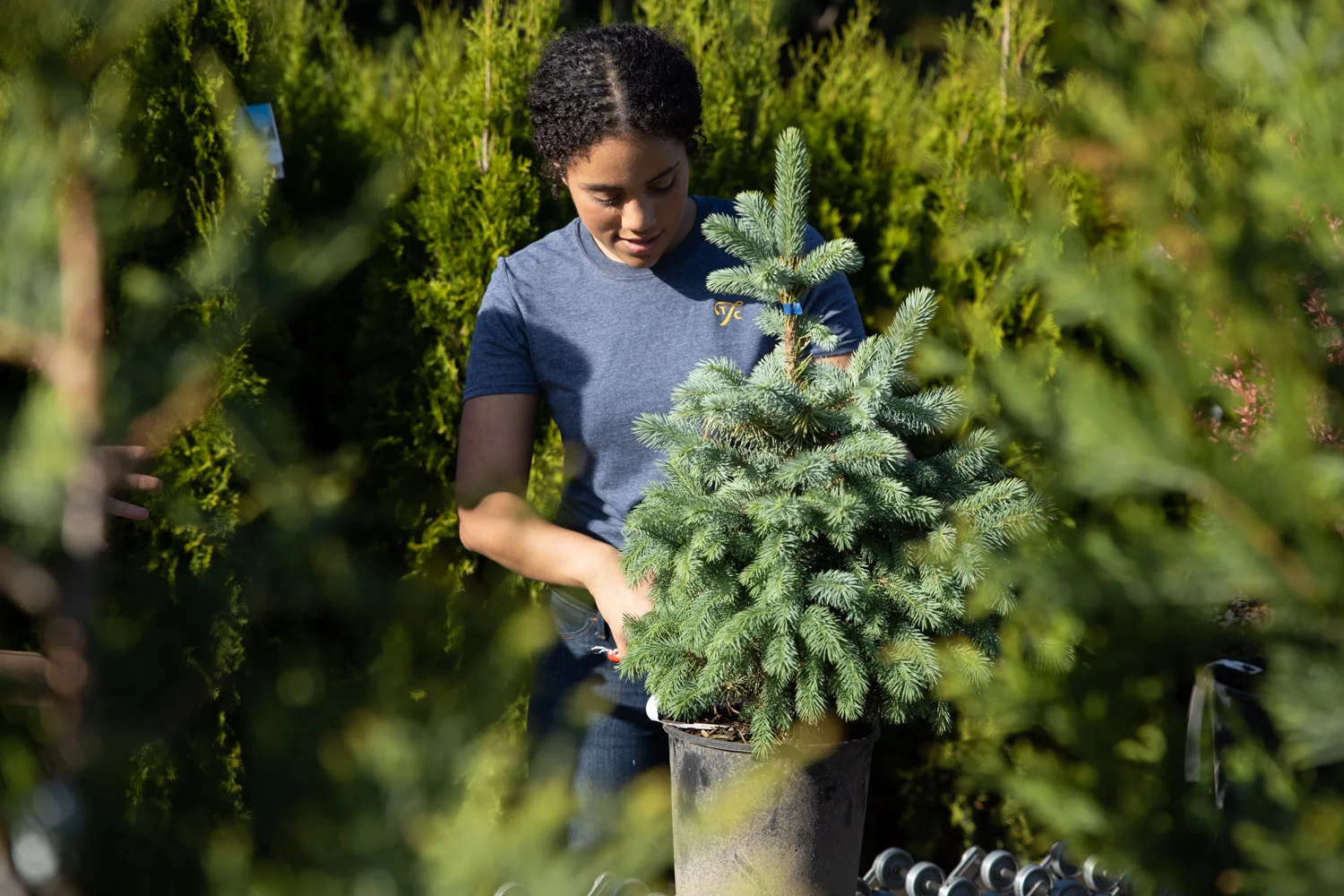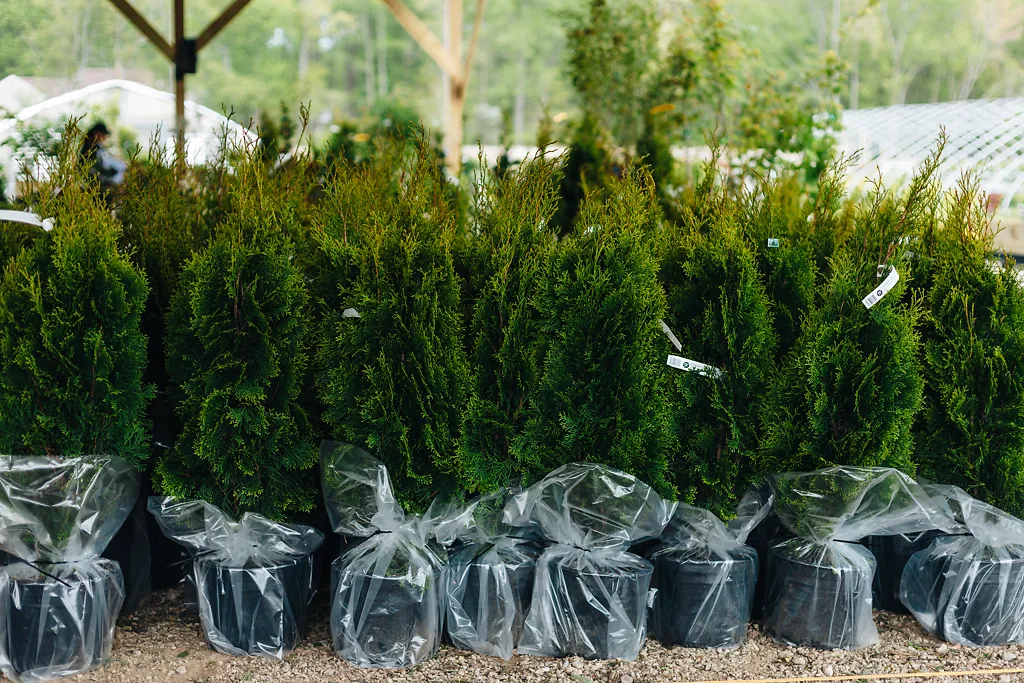
Written by s • Trees in Containers – Perfect for the Smaller Garden. Part 1
Trees have an almost mystical fascination for many people. Their silent lives, spread over decades or centuries, and even millennia, speak to us of survival and endurance. The almost magical experience of a walk in the woods has been proven to promote calm and balance in our bodies and souls. Even trees along our busy city streets purify and cool the air, reduce visual harshness, and make our urban centers so much more livable.
It is only natural that, consequently, we want to also surround our homes with trees, so that we can immerse ourselves in the tranquility they radiate. Sadly, the growth of small, urban gardens, at the expense of larger suburban and rural ones, means that the classic shady oak or maple on the green lawn is no longer possible for many, many people. That doesn’t have to mean a home without trees, because there are many that can be grown for years and years in suitable containers, and they will bring that forest magic to a small city yard, a courtyard behind an apartment building, and even to a terrace or balcony, many floors high in the sky.
In this first part of our discussion of trees in containers we will look at choosing containers and caring for your tree, so that you can see what is involved, and begin to make plans. Next time we will discuss suitable trees – there are many you can grow in a container in even the smallest garden.
Choosing a Container
The first step in growing that tree in a pot is to choose a suitable container. Although you can grow a tree in the cheapest plastic pot, most of us will want to use something more suitable. Almost anything can be turned into a planter, but there are a few basic needs that must be satisfied.
- Drainage is the number one need. Every pot must have one or more good-sized holes in the bottom, so that water can escape freely. Cover the hole with a single stone or a piece of screening, since a layer of pebbles in the bottom is harmful, trapping water in the soil, rather than allowing it to escape.
- The soil volume must be enough to allow for several year’s root growth. Most trees will do well in a pot that is 12 inches across and deep, and larger trees will grow more or less indefinitely in a container 24 inches across and deep. Remember though, that the container should not be hugely bigger than the existing root ball. If a tree is surrounded by a large volume of soil that it has no roots in, that soil will remain wet and cold, encouraging root diseases. So always use a container just a few inches wider and deeper than the existing one, and pot the tree into larger and large pots as it grows. If you have a beautiful large pot you want to use, but it is too large for the root-ball, then fill the pot with clay pebbles (Hydroleca®), and then bury a smaller plastic pot of a suitable size in it, until the tree grows large enough to be transplanted directly into the main container.
- A suitable pot can be of just about any rot-resistant material, but something that allows water to pass through it, like terracotta, is best for long-term growing. The more rapid movement of water means that more air is drawn into the root zone, and the roots will remain healthier.
Planting Trees in Containers
Although a tree in a pot is not so different from growing any other plant in a container, the long life it will have in that container means that a suitable soil is important. The soil used should be one suitable for long-term growing. Garden centers often sell soils designed for outdoor planters, and these have more bark and coarse materials in them, which are good components. If you are growing an acid-loving tree, such as a camellia, then make sure you use a soil that is acidic. Plain garden soil is not suitable, and should never be used. Some soil is however a good idea for long-term planting, and adding about 20% rich garden soil to a pre-made soil-less mixture is good for trees living many years in containers. Don’t add too much, or the soil will no longer drain properly. If your garden soil is not good quality, and the same acidity as the tree needs, leave it out altogether.
When you plant or transplant your tree, always put it into the new pot at the same depth as it was before. As the trunk thickens, you might even want to plant a little more shallowly, showing off the flare of the base and the beginning of the roots of the tree, which will create a feeling of maturity.
Develop a regular habit of fertilizing your tree from spring onwards, when the buds begin to swell, until mid or late summer. The best kind of fertilizer to use is a liquid one, which is added when watering. The nutrients will be immediately available to the roots, and steady growth will be sure to follow. Since you don’t want your tree to outgrow the container, don’t overfeed, and use a fertilizer for flowering trees, not hedges or shade trees. Hedge fertilizers contain a lot of nitrogen, and will produce long shoots and rapid growth. You might want this in the first few years, if you are starting from a small tree, but mostly you want steady, healthy growth, and maturity. If your tree is a flowering one, then the lower nitrogen, and higher levels of other nutrients, will encourage a spectacular display of blooms. The frequency of feeding will depend on the fertilizer you use – always follow the directions. Once every two weeks in spring, and once a month after that is often a good regime to follow.
Pruning Trees in Containers
Pruning a tree for beauty means being selective, and trying to make it look like your tree has not been pruned at all. If you can, find a mature version of your tree growing in a garden, and use that as a model to develop a natural look. Usually you will want to remove lower branches so that you produce an attractive trunk. Thin out some of the branches so that the tree is more open and mature looking. Shorten back new shoots a little to encourage more compact growth. Try to see ahead, and remove branches while they are still small, as removing large ones will leave stumps and scars that may take years to disappear. If you are growing a flowering tree, prune immediately after flowering, and try to avoid pruning later on. Doing that will often remove buds that are going to become flowers, so you will be removing the beauty you want to see.
In part 2 of this blog we will consider suitable trees for growing in containers, no matter where you live, and no matter what space or garden you have.






